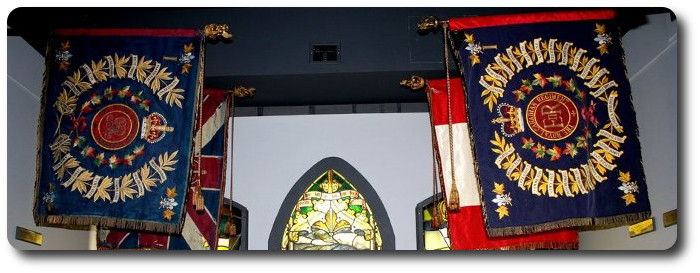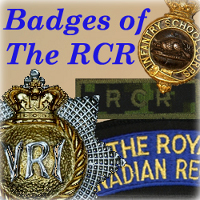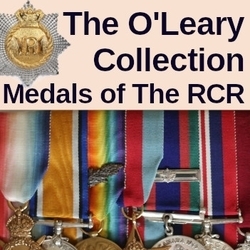
Researching The Royal Canadian Regiment
The Battle of Chail-Li
The Battle for Kakhul-Bong - 30 May 1951
2nd Battalion, The Royal Canadian Regiment
Pro Patria No. 30, November 1976.
"At this juncture the advance guard from 25th U.S. Division was withdrawn and the Canadians were on their own. On May 28th the approach march resumed, with the Filipinos on the left and the "Van Doos" on the opposite flank. The Brigade now was closing up on the so-called "Iron Triangle", the natural fortress of peaks and crests from which the Chinese had launched their earlier offensives. That evening Second Battalion, advancing in the right brigade sector, had halted at a burned-out village just short of Kakhul-bong, a massive buttress standing against the eastern skyline. Beyond it, in the valley bottom, lay the village of Chail-li. Between the village and the great butte stood Hill 269 while on the opposite or western side of the valley a lower hummock, Hill 162, blocked the way. Major H.B. Boates planned to approach the main feature along subsidiary ridges from either side, with 11 Platoon (Lt J.R. Woods) on the right and 12 Platoon (Lt D.A. Stickland) on the left.
Midway to the crest 12 Platoon was ambushed and shot down, almost to a man. Pte Paddy O'Connor, a gallant stretcher bearer, dashed to its assistance and was killed instantly. Major Boates ordered 10 Platoon (Lt J. Cowan) to reinforce the left flank and the attack to continue. A Chinese outpost was stormed with Lt J. Barrett, in charge of the mortars, joining in the assault. The western of the twin peaks was won and the pressure was eased on II Platoon, but its objective -the highest ground of all, lay across a deep and narrow gully. Enemy machine guns dominated every line of approach. Despite artillery and mortar fire and the close-range attentions of II Platoon's rocket launcher these guns remained in action. One section climbed to within twenty feet of the crest and then found it death to move. Another section, taking advantage of the mist, worked around into the rear of the feature, where it came upon a small group of Chinese oblivious to danger. According to Pte G.E. Gallinger, as reported by the Canadian Press, "they were nonchalantly sitting on the terraced paddy, talking and eating their rice". It was their last supper; a close-range burst put paid to them.
D Company headquarters moved up to join 10 Platoon on the western peak. Major Boates and his artillery observer had no sooner arrived than a crash shoot swept the height. The company commander was wounded and Lt J. Cowan took over. Victory was so near -yet so far. Below the Chinese could be seen concentrating in substantial numbers for a counter-attack.
The plans of battle called for A Company to advance along the valley floor and seize Chail-li. B Company would protect the left flank by occupying Hill 162. A Company would attack Hill 269 on the opposite side of the village and D Company would be launched against the main objective - the twin peaks of Kakhul-bong.
On May 30th dawn broke through misty and drizzly skies. A Company made its was into Chail-li with little difficulty, but before noon the village was under heavy fire and groups of the enemy, displaying what the Canadian
Official Historian has described as "superb fieldcraft" had infiltrated across the paddy and had worked their way into the rear of the village. They were wearing ponchos and Major Medland mistook them for elements of C Company until a blaze of close-range fire disillusioned him. Heavy pressure came on his flank platoons and he reported a serious situation. His men were fighting grandly; typical performances were those of Pte J.A. Sargent, a machine gunner who intervened skillfully again and again against the encroaching enemy; and of Cpl P.F. Gingras of the Signals, who braved heavy fire to maintain communications with the rear.
Neither B nor C Companies encountered much resistance in seizing and holding their objectives, but thereafter they were unable to assist their embattled comrades.* Major Peterson and his men watched A Company's encirclement with anxious eyes; the scurrying Chinese were just out of range. Nor were they able to intervene on D Company's behalf on the opposite flank, where a grim struggle had developed on the approaches to Kakhul-bong.
In the early afternoon Brigadier Rockingham weighed the situation. His flanks were open; on either side his Brigade was several thousand yards ahead of the general line of advance. A Company was in pawn to the enemy, Band C Companies could contribute nothing to a victory, D Company could not make that last twenty feet to the summit of Kakhul-bong. The night might bring disaster, so he ordered Second Battalion to disengage and to fight its way back. The artillery and mortars intervened with protective barrages and the tanks in the valley bottom covered with their hulls the evacuation of A Company's wounded. The Battalion slowly withdrew, in some instances being followed by the enemy. By 2100 hours the companies had consolidated on a reserve position, with an American battalion in close support.
It had been a stern blooding. Losses came to six other ranks killed, two officers and 23 other ranks wounded. Second Battalion had every reason to be satisfied with its performance. The lie of the land had been all in the enemy's favour, yet men new to battle had matched his courage and his cunning. Many a proud regiment had done less in its first encounter.
On that day also Second Battalion had learned something about its allies. Like all United Nations units it had its attached details of the Korean Service Corps. "Our bearers", wrote Lt Stickland, "quickly came up, bringing our reserve ammunition. One of their lads, when we first came under fire, grabbed a rifle from one of our wounded and was quite ready to do his share in the fighting. The Koreans waved me aside and took over the task of laying out the three bodies and carrying them to the rear. This they did with a certain reverence, as though it were a privilege to look after our fallen. " (I)

On the 29th May 1976, twenty-nine Officers who served with 2RCR in Korea gathered at the Army Officers' Mess in Ottawa to mark the 25th Anniversary of The Battle of Chail-Li and the Battle for Kakhul-Bong. What a memorable evening for so many old comrades-in-arms who, in many cases, had not seen each other for over 20 years.
The dinner was a tremendous success. With 29 present out of 40 odd potentials the organizing committee were amazed with the response. Stu Northrup flew in from Brussels, Doc Stevenson from Minnedosa, Manitoba, Any MacRae from Fredericton, N.B., and good-sized contingents represented London, Kingston, Ottawa and points in-between. Maj (Ret'd) Bill Hill couldn't manage the trip from Australia but sent a cheque to buy all who attended a large drink.
The battle strategy for Chail-Li was re-examined, the historian duly chastised for his errors and a considerable quantity of Tokyo Sheri, Imjin White, Chorwon Red and Pusan Port duly consumed during the most wonderful re-union this writer has experienced since joining the Regiment 26 years ago.
In accordance with the seating plan, these are the stalwarts who attended:
| Phil Ash | Don Smallman |
| John Hunt | Pappy Renwick |
| Tommy Hayes | Eric Devlin |
| Rev John Ruth | Carm Darling |
| John Barrett | Don Burton |
| Blake Baile | Andy MacRae |
| Dick Medland | Kitch Wildfang |
| Ed Mastronardi | Murray Donely |
| Doc Stevenson | Rev Geo Bickley |
| Johnny Kim | Hugh MacDonald |
| Arnie Cockburn | Harry Hihn |
| Ivan Wright | Pete Taylor |
| Don Stickland | Stu Northrup |
| The CO - Bob Keane | |
| PMC - Jim Cowan | |
| Vice PMC - John Woods | |
* C Company endeavoured to bring its support weapons into fire against the Chinese, clearly visible on the lower ground. Unfortunately rain and mud rendered them useless.
(l) G.R. Stevens, OBE, LL.D, The Royal Canadian Regiment, Vol Two, 1933-1966, London Printing, pp 224-26.


